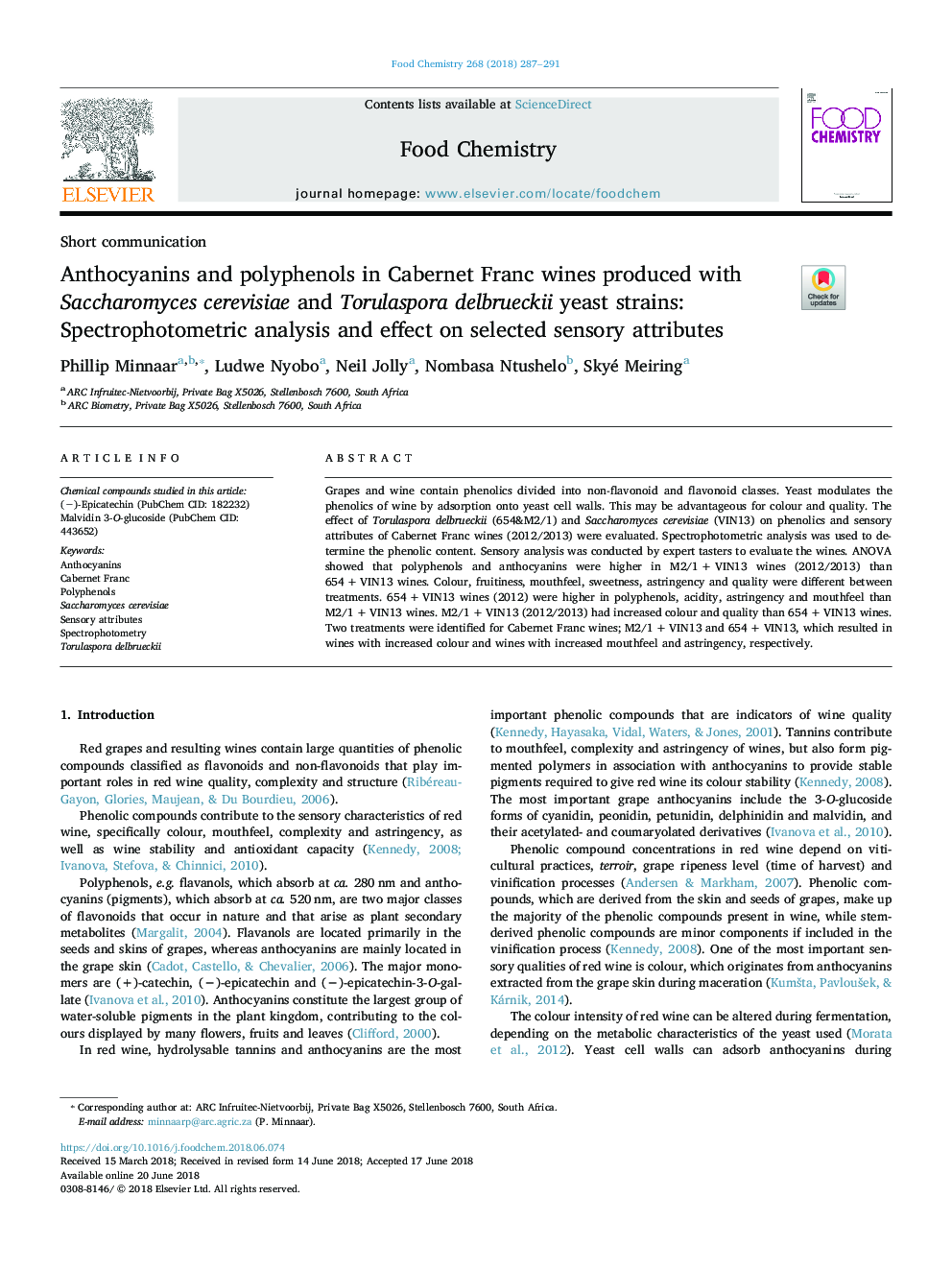| Article ID | Journal | Published Year | Pages | File Type |
|---|---|---|---|---|
| 7584512 | Food Chemistry | 2018 | 5 Pages |
Abstract
Grapes and wine contain phenolics divided into non-flavonoid and flavonoid classes. Yeast modulates the phenolics of wine by adsorption onto yeast cell walls. This may be advantageous for colour and quality. The effect of Torulaspora delbrueckii (654&M2/1) and Saccharomyces cerevisiae (VIN13) on phenolics and sensory attributes of Cabernet Franc wines (2012/2013) were evaluated. Spectrophotometric analysis was used to determine the phenolic content. Sensory analysis was conducted by expert tasters to evaluate the wines. ANOVA showed that polyphenols and anthocyanins were higher in M2/1â¯+â¯VIN13 wines (2012/2013) than 654â¯+â¯VIN13 wines. Colour, fruitiness, mouthfeel, sweetness, astringency and quality were different between treatments. 654â¯+â¯VIN13 wines (2012) were higher in polyphenols, acidity, astringency and mouthfeel than M2/1â¯+â¯VIN13 wines. M2/1â¯+â¯VIN13 (2012/2013) had increased colour and quality than 654â¯+â¯VIN13 wines. Two treatments were identified for Cabernet Franc wines; M2/1â¯+â¯VIN13 and 654â¯+â¯VIN13, which resulted in wines with increased colour and wines with increased mouthfeel and astringency, respectively.
Keywords
Related Topics
Physical Sciences and Engineering
Chemistry
Analytical Chemistry
Authors
Phillip Minnaar, Ludwe Nyobo, Neil Jolly, Nombasa Ntushelo, Skyé Meiring,
